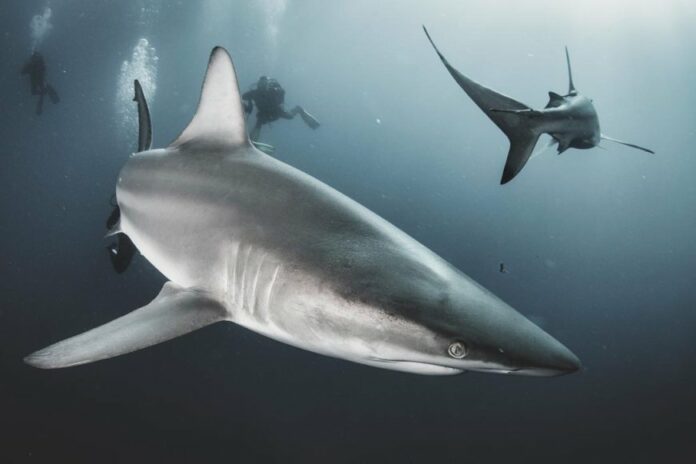Researchers at Wageningen University have detected several shark and ray species in and around Dutch wind farms via traces of DNA in seawater, and say the energy developments may help protect marine life as well as produce energy.
The findings, published in the journal Ocean and Coastal Management, mark the first time Wageningen scientists have confirmed the active presence of rays and sharks through environmental DNA (eDNA) in seawater.
This is is genetic material left by organisms in their surroundings and allows scientists to identify species that have passed through an area without the need for physical capture.
“We’re trying to understand whether these animals are actually using the wind farms as habitat, or whether they’re being displaced by them,” said PhD researcher Annemiek Hermans.
Five different shark and ray species were detected in four offshore wind farms. The thornback ray (Raja clavata) was the most frequently observed species, found year-round at three of the sites.
Basking sharks (Cetorhinus maximus), a migratory species that feeds on plankton and can grow up to eight metres long, were detected during winter in Hollandse Kust Zuid.
Other species identified include the starry smooth-hound (Mustelus asterias) and the blonde ray (Raja brachyura), both observed across multiple seasons and locations.
Trawling and other forms of seabed-disturbing fishing are prohibited within offshore wind farms, allowing marine ecosystems to recover. Researchers believe these more stable habitats could benefit vulnerable species such as sharks and rays.
“We must tread carefully,” Hermans said. “If we start allowing bottom trawling in these areas, we risk losing the very protection these zones may offer.”
The research is part of a wider project to investigate whether electromagnetic fields from subsea power cables in offshore wind farms affect shark and ray behaviour, as these species rely on electro-sensory perception for hunting and navigation.
Source: dutchnews



